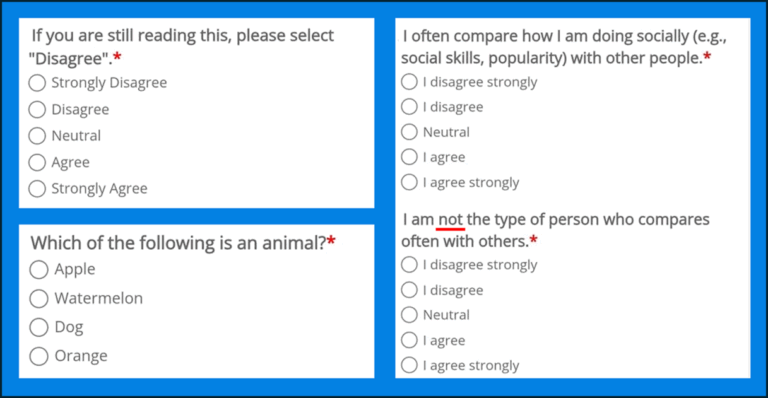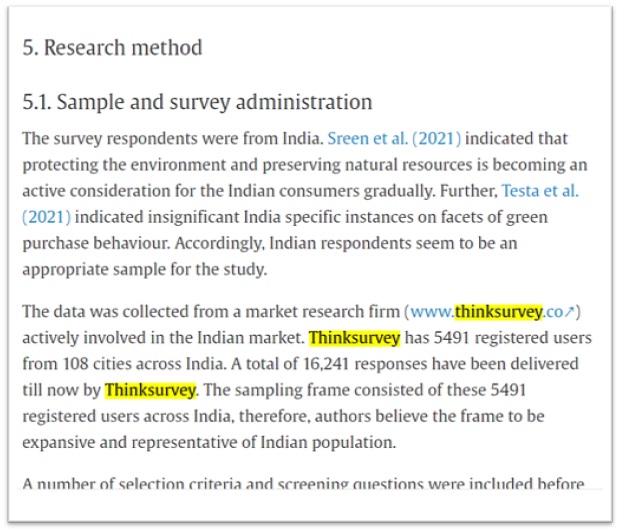7 Common Data Collection Challenges in Research and How to Overcome Them
Data collection is the backbone of any research, but for many researchers it can feel like entering uncharted territory. From ensuring representative samples to dealing with survey fatigue, the challenges can derail timelines and compromise the quality of findings. For PhD scholars, early-career academics, market researchers and even seasoned researchers, these issues are common but manageable with the right strategies.
Below are seven common data collection challenges—and practical tips to overcome them.
1. Limited Access to Target Respondents for Market Research
Certain populations such as senior citizens, professionals in niche industries, or rural households are harder to reach for surveys, adding to data collection challenges for researchers. However, the golden rule for any research is to be able to reach participants across any regions, languages, and income levels. The survey methodology in India must account for this diversity.
How to avoid it:
- Use multi-channel recruitment methods (email, social media, online & offline communities).
- Partner with survey providers who maintain targeted respondent pools.
- Clearly define inclusion criteria before launching your survey.
Live Example:
To carry an effective data-driven market validation for New Norm Foods, the founders wanted survey insights specifically from Mumbai-based consumers. Their independent outreach brought in too few responses, leaving them without statistically reliable data. By partnering with ThinkSurvey, they were able to access a curated audience panel from their target location, ensuring sufficient sample size and more confident, data-driven decisions.
2. Data Quality Issues in Academic Research
Incomplete responses, straight-lining, or contradictory answers often appear in raw survey data. If not handled carefully, these errors compromise analysis and can deviate the study results.
Researchers must be vigilant about the accuracy and reliability of the data collected to avoid any challenges while analysis. Data entry errors, misinterpretations, and inconsistencies can be a researcher’s worst nightmare.
How to avoid it:
- Add validation checks in your survey design (e.g., prevent skipping mandatory questions).
- Include attention-check questions to filter out careless responses.
- Remove “straight-lining” responses (same answer for every item).

Best Practices:
Avoid using vague statements or unclear opposite questions. The easier it is for participants to understand the questions the better chances you will have of obtaining honest and quality answers.
The most commonly used attention check questions are:
Which of the following is a fruit?
- Chair
- Elephant
- Mango
- River
If you are still reading this, please selection “Neutral”:
- Strongly Agree
- Agree
- Neutral
- Disagree
- Strongly Disagree
3. Survey Fatigue in Research Studies
When respondents receive too many surveys, overly long questionnaires, similar or repetitive looking questions – they tend to rush through or abandon them altogether, adding to the worst data collection challenges. This leads to participants losing interest resulting in poor-quality data.
How to avoid it:
- Keep surveys concise and relevant.
- Use skip logic and branching to reduce unnecessary questions.
- Space out follow-up reminders instead of sending them back-to-back.
Live Example:
A research team from IIM Kozhikode optimized their data collection process using online survey tools. They needed to collect 500 high-quality responses for each of their academic studies, which involved relatively lengthy questionnaires. Online mode of data collection allowed respondents to complete the surveys at their convenience, leading to higher completion rates and reliable data quality without overwhelming the target audience.
4. Non-Representative Samples
When your sample does not reflect the diversity of the population you intend to study, the credibility of your research suffers, adding to a major data collection challenge. For example, collecting responses only from urban participants while exploring national consumer behaviour creates a clear bias. Researchers often overlook critical dimensions such as respondents’ region, profession, or socio-economic background, leading to skewed insights that cannot be generalized.
How to avoid it:
- Use stratified or random sampling techniques.
- Balance respondents by demographics such as gender, age, income, and geography.
- Connect with market research services in India to utilise large, pre-screened online panels to cover diverse segments.
Research Tip:
Before starting data collection, assess whether your sample can truly represent the target population. Familiarize yourself with core representative sampling methods—random, quota, and stratified sampling—and critically evaluate whether your data collection platform supports these approaches. A representative sample is not about size alone; it’s about accuracy and balance.
5. Low Response Rates in Surveys
One of the biggest challenges in data collection for survey-based research is securing enough participants. Low response rates weakens representativeness and limit generalizability of target demographics.
How to avoid it:
- Send personalized invitations that clearly state the purpose and benefits of the study.
- Provide appropriate incentives to motivate responses. (certificates, vouchers, acknowledgements)
- Use a trusted online audience panel for reliable participation.

6. Time and Resource Constraints
One of the most overlooked data collection challenges in research is estimating the time and resources required. Recruitment delays, low response rates, survey dropouts, and inefficient planning often stretch timelines far beyond expectations. For academic researchers and market research teams alike, limited budgets, tight deadlines, and lack of manpower can further complicate the process. These constraints not only delay results but also risk compromising the quality and depth of the data collected.
How to avoid it:
- Plan survey timelines realistically, with built-in buffers for recruitment and follow-ups.
- Use automation tools for survey distribution, reminders, and response tracking.
- Partner with trusted survey platforms or data collection agencies to save time and ensure access to qualified participants.
Live Examples:
The researchers from IIM Shillong utilised online survey software solution to access large pool of participants. The research team started with a pilot survey to identify bottlenecks before committing to a full-scale rollout. This phased approach helps optimize timelines, control costs, and ensure smoother execution across academic studies, market validation, or large-scale consumer research.
7. Ethical Concerns Around Informed Consent
Informed consent is not just a formality—it’s the cornerstone of ethical academic research and crucial to mitigate any data collection challenges. Without it, participants may feel misled, and your study risks being rejected by ethics committees, universities, or journals. Mishandling sensitive information, skipping consent, or failing to explain risks can severely damage credibility and halt publication altogether.
How to avoid it:
- Draft consent forms that are clear, concise, and jargon-free.
- Explicitly state the study’s purpose, potential risks, participants’ rights, and data privacy protections.
- Always seek approval from an Institutional Review Board (IRB) or ethics committee when required.
Research Tip:
Test your consent form with a small pilot group before rolling it out. Ask if the language is easy to understand and whether participants truly feel informed. This not only ensures compliance but also builds trust and transparency in your data collection process.
How Online Survey Platforms Help Overcome Data Collection Challenges
Platforms like ThinkSurvey make it easier for researchers to avoid these nightmares by offering:
- Pre-screened audience panels across India with diverse demographics.
- Scalable data collection, from 50 to 5,000+ responses.
- Expert support in survey design, sampling, and execution.
- Faster turnaround times, ensuring projects stay on track.
By addressing these challenges early, researchers can improve data quality, strengthen the credibility of their findings, and tale confident decisions.
Frequently Asked Questions (FAQs)
1. How does the choice of survey mode (online vs. in-person) influence data collection challenges in India?
The mode of survey, online or in-person, directly shapes the kind of data collection challenges researchers face in India. Online surveys reduce cost and reach wider audiences but can exclude low-digital-access groups or face disengagement issues. In-person methods improve trust and accuracy but demand more time and resources. Many researchers now use hybrid survey research methods to balance scale with representativeness. Online data collection service providers like ThinkSurvey help overcome these barriers by enabling multi-channel surveys with demographic targeting and automated quality checks.
2. Are mobile-based surveys effective for overcoming data collection challenges in Tier-2 and Tier-3 towns of India for market research?
Yes. Mobile-based surveys are increasingly effective in market survey data collection in India, especially in Tier-2 and Tier-3 regions. Growing smartphone penetration and regional language options have improved accessibility among diverse respondent groups. However, mobile optimization and concise question design remain critical for maintaining response quality. ThinkSurvey’s mobile-first survey panels support researchers in capturing reliable data from semi-urban and rural populations efficiently, ensuring inclusivity and representativeness.
3. What demographics should researchers include to minimize non-representative sampling challenges?
Well-structured Indian survey panels cover respondents across gender, age, profession, education, income, and regional categories. This diversity ensures balanced representation and generalizable results. ThinkSurvey’s panel includes participants from metropolitan cities to semi-urban towns, across major income brackets and professional groups – from more than 100 cities of India, helping both academic and business researchers achieve robust, representative data.
4. Can researchers design scenario-based or image-based questions in online surveys for research?
Modern online survey platforms now support visual and interactive question formats. Researchers can include product mockups, images, or hypothetical scenarios to test perceptions more accurately. ThinkSurvey supports both image-based and scenario-based survey designs, allowing respondents to engage visually while maintaining compatibility across devices.
5. How quickly can researchers collect and receive cleaned, high-quality data for their studies?
Turnaround time depends on survey length, target demographics, and sample size. For standard market surveys (100–500 participants), clean, normalized datasets are typically delivered within a few days. ThinkSurvey accelerates this through automated response validation, real-time dashboards, and quick data exports in Excel/SPSS formats – ideal for researchers working with strict deadlines.




